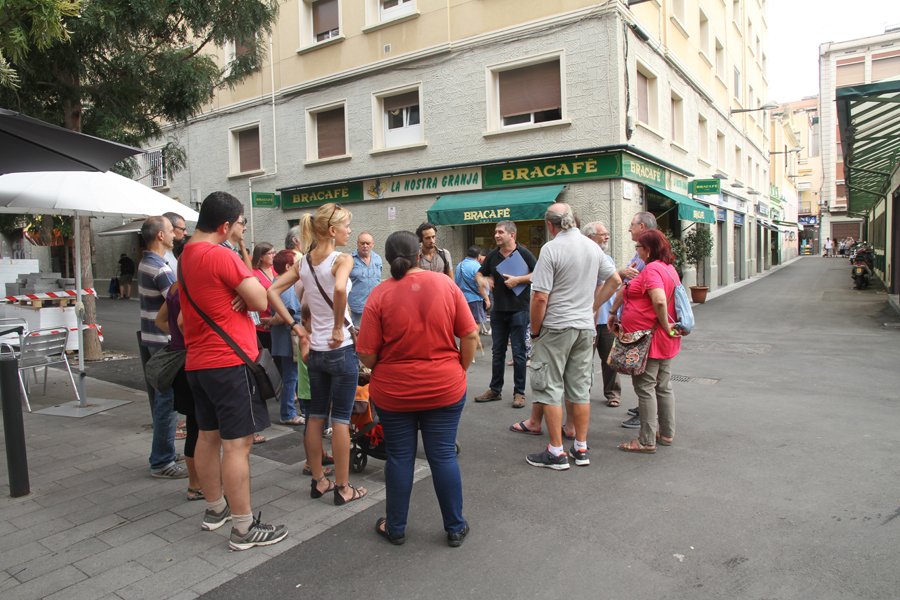


Last Saturday, Manuel Domínguez (member of the
Centre d’Estudis de L’Hospitalet
) revealed to us the history of the Cooperativa El Respeto Mutuo during the route we took through the neighborhood of Santa Eulàlia (L’Hospitalet), organized by the MunsUva site.
El Respeto Mutuo was founded in 1910 in Santa Eulàlia as a consumer cooperative, and from its beginnings, cultural activities were organized, and it became an important social and meeting space in the neighborhood. We find it remarkable how the cooperative inseparably contemplated these two aspects: the economic and the socio-cultural: on the one hand, the sustenance of life, especially for the working classes, by offering consumer goods at affordable prices, and on the other, the development of cultural and social activities. Both were part of the same political project of emancipation from the forms of exploitation and social injustice that accompanied the first expressions of industrial capitalism in the early 20th century (regarding this, Manuel explained to us that the first strike in L’Hospitalet was led by workers from a factory located in Santa Eulàlia; they demanded an 11-hour workday). This institutional model contrasts with the way in which it is currently intended to bring together cultural entrepreneurship and creative industries with public policies of urban ‘regeneration’, processes that rarely result in a redistribution of wealth or in forms of collective cultural production beyond the consumption of cultural and leisure products.
![ahsep-asoc-coop-ElRespetoMutuo001-Façana(ByN)[50]](../wp-content/uploads/_imported/6_1_1656614318.jpg)
We find it very interesting to recover in L’Hospitalet, from ‘spaces of the common’ —as the MunsUva site wants to be— the memory of institutions like this one.
The
Arxiu Històric Santa Eulàlia de Provençana
published in 2011 a series of three entries in which the history of this cooperative is narrated in detail. If you are interested in the topic, we recommend reading them: Part I, Part II and Part III.